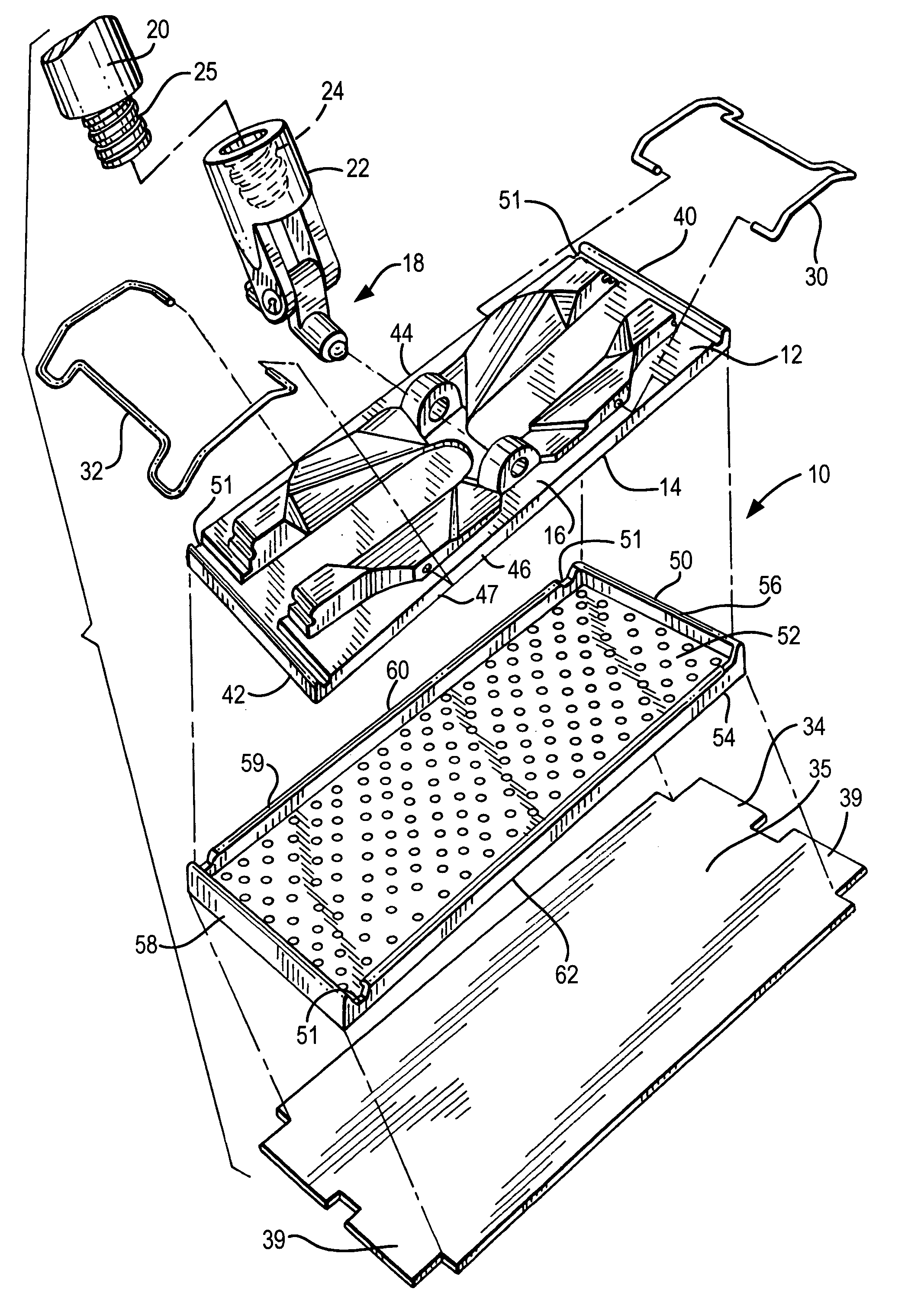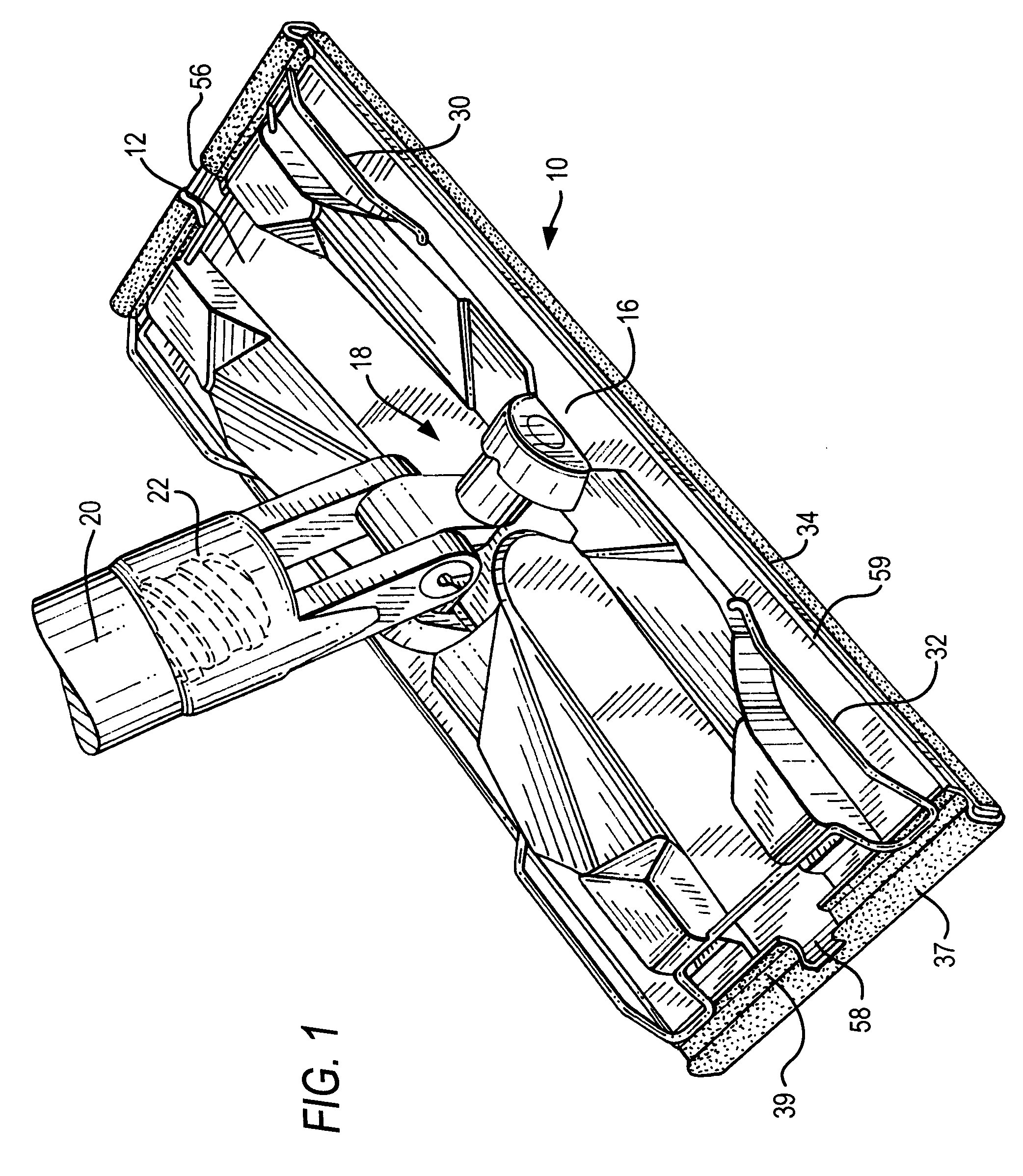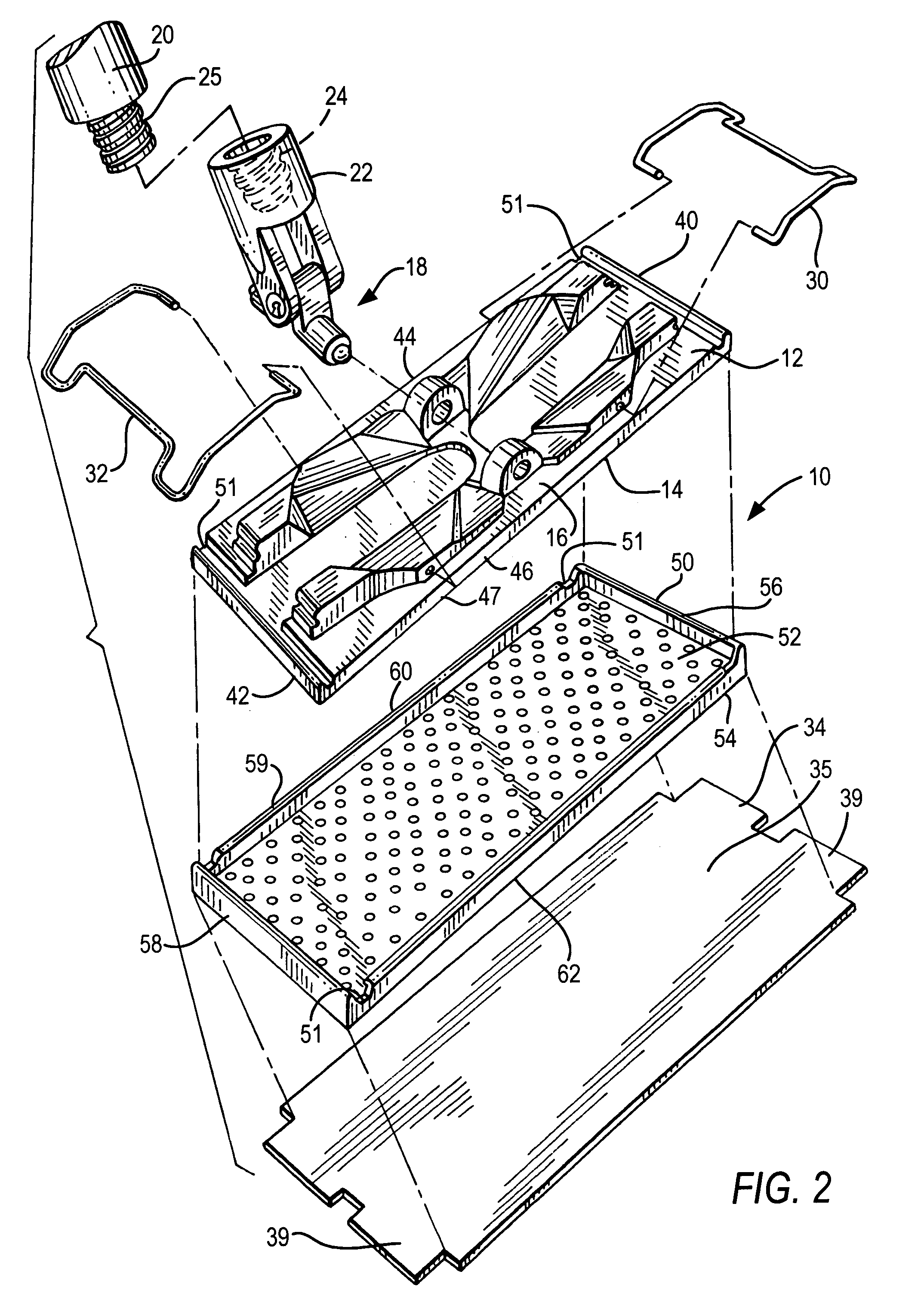Sanding apparatus with molded elastomeric pad
a technology of resilient elastomeric pad and sanding apparatus, which is applied in the field of molded elastomeric pad, can solve the problems of reducing the effectiveness and versatility of sanding pads, reducing the safety of sanding pads, so as to prevent sandpaper or abrasive screening. , the effect of widening and widening
- Summary
- Abstract
- Description
- Claims
- Application Information
AI Technical Summary
Benefits of technology
Problems solved by technology
Method used
Image
Examples
Embodiment Construction
[0027]Referring to the sander of the present invention, there is shown a sander 10 having a generally rectangular molded body member 12 including a bottom backing wall or surface 14, which is generally planar, and an upper handle mounting surface 16. Said surfaces 14 and 16 are substantially parallel.
[0028]The body member 12 also has a pair of shorter parallel end walls 40, 42 and a pair of longer side walls 44, 46, said walls 40, 42, 44, 46 being upstanding or vertical and essentially continuous around the body member 12 and forming thereby a continuous exterior flat surface 47. In a preferred embodiment, said flat surface has a height that is approximately three-eighths of an inch at the end walls 40, 42 and a height that is approximately three-eighths of an inch at the side walls 44, 46. The end walls 40, 42 and side walls form a rectangular array and a border of the body member 12. The body member is desirably formed of polypropylene material.
[0029]Mounted on the handle mounting...
PUM
 Login to View More
Login to View More Abstract
Description
Claims
Application Information
 Login to View More
Login to View More - R&D
- Intellectual Property
- Life Sciences
- Materials
- Tech Scout
- Unparalleled Data Quality
- Higher Quality Content
- 60% Fewer Hallucinations
Browse by: Latest US Patents, China's latest patents, Technical Efficacy Thesaurus, Application Domain, Technology Topic, Popular Technical Reports.
© 2025 PatSnap. All rights reserved.Legal|Privacy policy|Modern Slavery Act Transparency Statement|Sitemap|About US| Contact US: help@patsnap.com



